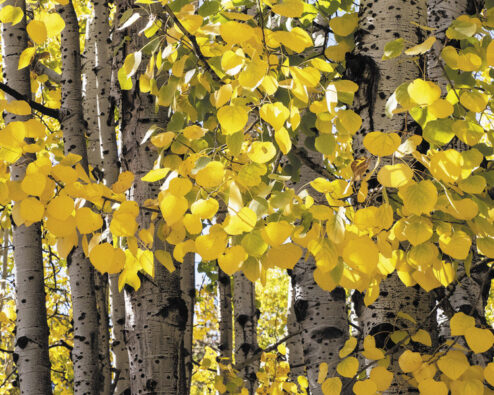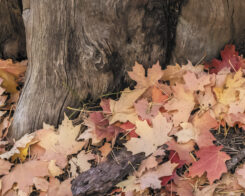Gerry Tietje
The Sept. 22nd equinox ushered in a new season where longer days have given way to longer nights and thankfully much cooler temperatures. Monsoon rains have stopped, burgundy “apples” adorn prickly pear cacti, and pods on Soaptree yucas have dispersed their seeds. As the earth’s axis tilts further away from the sun in the northern hemisphere, aspen, maple and oak leaves take on hues that rival our beautiful Arizona sunsets.
Over the centuries this glorious season has had several names. In the 13th century, it was called “harvest.” In a largely agrarian society this made sense since it was a time when crops ripened and were ready for harvest. As people started to move to the cities in the 14th century the word “autumn” became popular in English speaking countries. The word autumn is derived from the Latin root word autumnus, meaning “the passing of the year.” The word “fall” began to be used for the season in the 1500s. Fall is a shortened form of “the fall of leaves,” which complemented “the spring of leaves,” or spring. Autumn was thought to be more formal, and fall was thought to be more poetic. Both were in use in Europe when the Mayflower sailed to America in the early 1600s. Since that date, most of the people in Great Britain use autumn to describe this splendid season, and most people in the United States use fall.
The term fall is most appropriate. When people think of fall, they think of fall color, a time when leaves in many parts of the country turn from hues of green to hues of yellow, orange, and red. The process is complex, but basically, as temperatures drop and days get shorter, trees get less direct sunlight, and the chlorophyll in their leaves breaks down. Lacking chlorophyll, yellow and orange pigments that were already in the leaves but were masked during the warmer months by the chlorophyll, show through in a display of fall color. As fall progresses, branches drop their leaves, and the leaves carpet the ground as they fall.
Many people travel to New England, the Midwest, or Colorado to see beautiful fall color, but we have a place to see fall color right in our own backyard—Mount Lemmon. This sky island, named after the first known woman to climb the mountain, exhibits colorful leaves in October. Just above the Palisades Visitor Center is Bear Wallow, a place to see the peachy hues of Bigtooth maple leaves on the trees, and on the ground along the trail. Near the top of the mountain, near the ski area, aspen leaves display lemon yellow hues as they dangle in the breeze, and nearby maples display orange and red hues. Although it’s almost a two-hour drive from SaddleBrooke Ranch to the top of Mount Lemmon, the trip up the Catalina Highway and bonanza of fall color near the top of the mountain are well worth the effort.



